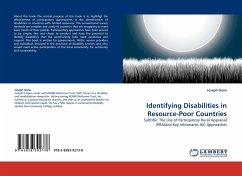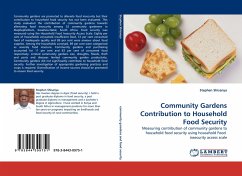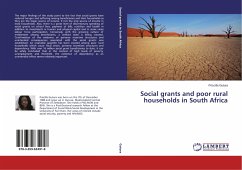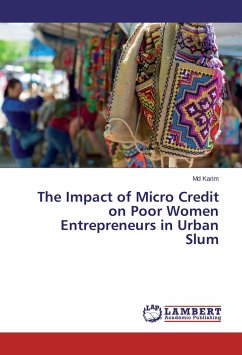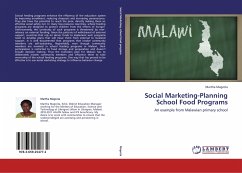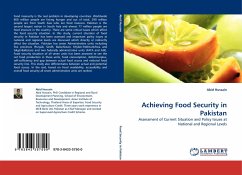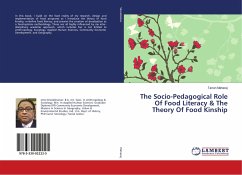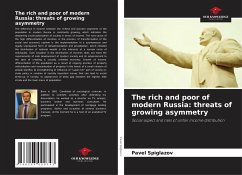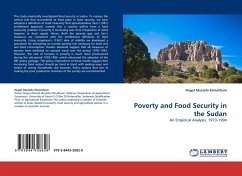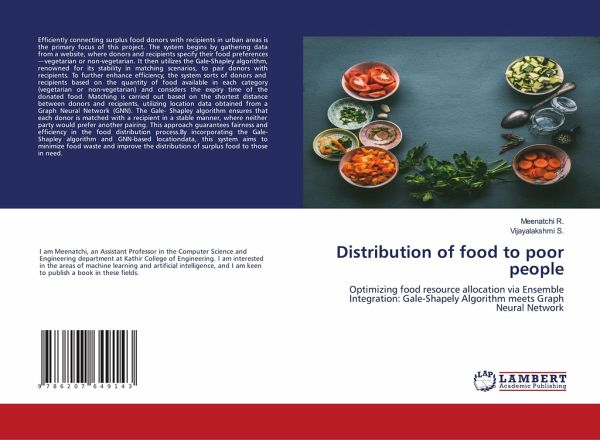
Distribution of food to poor people
Optimizing food resource allocation via Ensemble Integration: Gale-Shapely Algorithm meets Graph Neural Network
Versandkostenfrei!
Versandfertig in 6-10 Tagen
29,99 €
inkl. MwSt.

PAYBACK Punkte
15 °P sammeln!
Efficiently connecting surplus food donors with recipients in urban areas is the primary focus of this project. The system begins by gathering data from a website, where donors and recipients specify their food preferences-vegetarian or non-vegetarian. It then utilizes the Gale-Shapley algorithm, renowned for its stability in matching scenarios, to pair donors with recipients. To further enhance efficiency, the system sorts of donors and recipients based on the quantity of food available in each category (vegetarian or non-vegetarian) and considers the expiry time of the donated food. Matching...
Efficiently connecting surplus food donors with recipients in urban areas is the primary focus of this project. The system begins by gathering data from a website, where donors and recipients specify their food preferences-vegetarian or non-vegetarian. It then utilizes the Gale-Shapley algorithm, renowned for its stability in matching scenarios, to pair donors with recipients. To further enhance efficiency, the system sorts of donors and recipients based on the quantity of food available in each category (vegetarian or non-vegetarian) and considers the expiry time of the donated food. Matching is carried out based on the shortest distance between donors and recipients, utilizing location data obtained from a Graph Neural Network (GNN). The Gale- Shapley algorithm ensures that each donor is matched with a recipient in a stable manner, where neither party would prefer another pairing. This approach guarantees fairness and efficiency in the food distribution process.By incorporatingthe Gale-Shapley algorithm and GNN-based locationdata, this system aims to minimize food waste and improve the distribution of surplus food to those in need.




